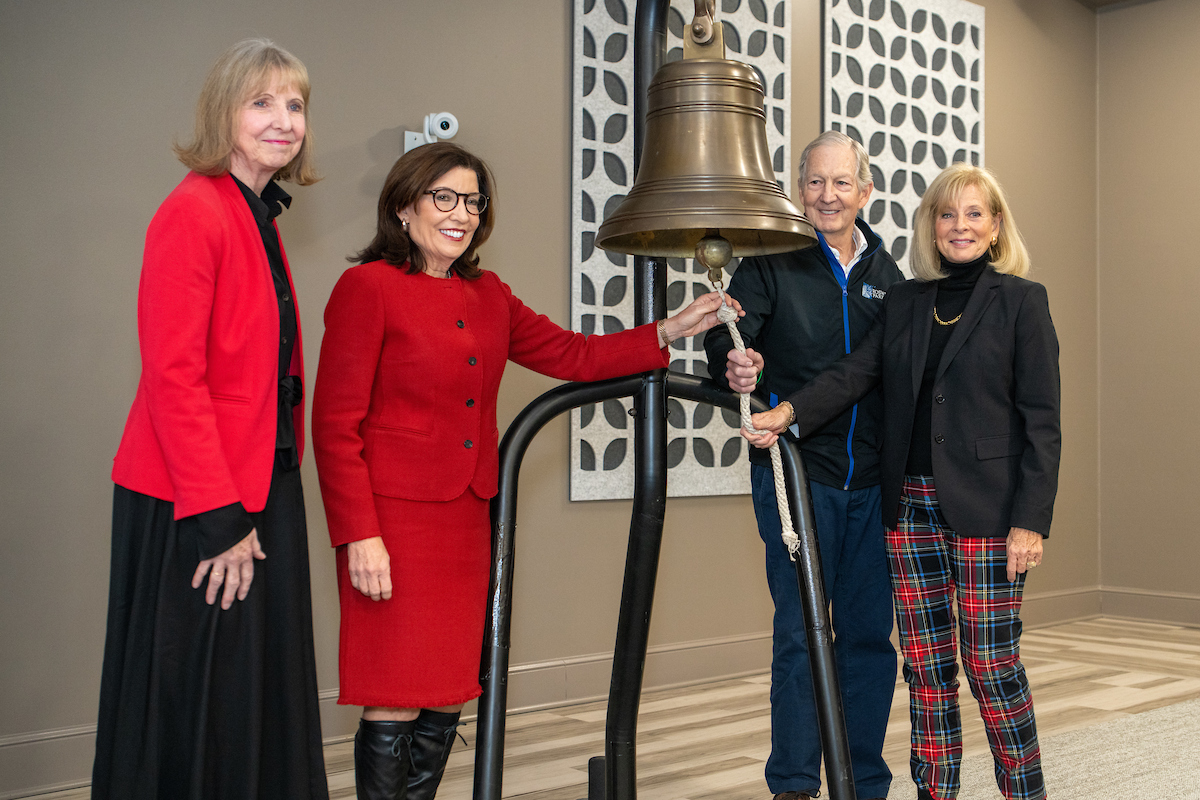Although the answer is important, researchers everywhere are watching the trial for its practical design as a clinical study open to a broad patient population with non-small cell lung cancer. Most new drug clinical trials have strict rules about participants’ diagnoses, medical conditions, functional status and other factors.
“The design of this clinical trial could change the paradigm for how some drugs undergo approval, ultimately increasing the number of participating medical centers and the number of participants who are able to enroll,” said Karen L. Reckamp, MD, associate director for Clinical Research in Cedars-Sinai Cancer, director of Medical Oncology in the Department of Medicine and principal investigator for Pragmatica-Lung. “This may open the doors to patients who might not otherwise be offered clinical trials.”
NCI collaborators for the Pragmatica-Lung Study include the SWOG Cancer Research Network, which designed and is leading the trial in collaboration with the Alliance for Clinical Trials in Oncology, and the pharmaceutical companies Merck (known as MSD outside the U.S. and Canada) and Eli Lilly and Company, each of which is providing one of the study drugs and additional trial funding. The study will be conducted with participation of the four U.S. NCI National Clinical Trials Network (NCTN) groups that focus on cancer in adults. The trial opened nationwide in March. Interested patients can learn more at ClinicalTrials.gov.
The therapy being tested—a combination of the medications ramucirumab and pembrolizumab, each previously approved by the Food and Drug Administration—was most recently examined in a SWOG randomized Phase II clinical trial funded by the NCI that was led by Reckamp. The study, in patients whose cancer had returned after chemotherapy and immunotherapy, concluded that the combination therapy significantly extended the lives of patients with one of the most common forms of lung cancer.
The results of that trial, presented in June at the American Society of Clinical Oncology annual meeting, were promising enough for a Phase III trial to follow. But creating and completing a Phase III trial can take years.
“We know that treatments for non-small cell lung cancer are evolving rapidly, so to wait many years to start a trial to confirm the results of this well-designed Phase II trial didn’t seem to make a lot of sense,” Reckamp said. “We have safe, FDA-approved drugs. We wanted to create a simple trial that would quickly tell us whether this combination improves patient survival over standard of care.”
There are three major factors that can cause a trial to lag, all of which Pragmatica-Lung aims to address:
- Burdensome enrollment criteria that require patients to submit imaging, tissue samples and other labs in order to ensure only ideal participants are included
- The requirement that research staff collect and report every side effect occurring in every patient, even if that side effect is not serious or unexpected
- Evaluation of multiple outcomes, such as whether or not a patient’s tumor continues to progress, regardless of how that affects patient survival
But the combination of ramucirumab and pembrolizumab—two FDA-approved medications that research has shown can be safely combined—seemed a good candidate for a new trial design that trims data collection requirements to a minimum.
“The FDA and the Clinical Trials Advisory Board have recently been exploring the idea of more streamlined, more practical clinical trials, and this is a good opportunity to move this idea into practice,” Reckamp said.
Reckamp and a team of others involved with the Phase II study began discussions with the NCI and members of the NCTN.
“We presented the Phase II data in June, and by November we had the Pragmatica-Lung protocol reviewed by the NCI Central Institutional Review Board,” Reckamp said. “This is breakneck speed not generally seen in developing a new trial.”
“This pragmatic approach could really speed up clinical trials and decrease the cost of trials,” said James H. Doroshow, MD, director of NCI’s Division of Cancer Treatment and Diagnosis. “We can do more studies that provide more answers for patients more quickly.”
The team simplified the eligibility criteria, allowing most patients with non-small cell lung cancer that had recurred despite chemotherapy and immunotherapy to be enrolled. This means virtually any NCTN institution in the U.S. treating lung cancer could participate.
“It empowers investigators to treat as they would in the real world and allows a much broader population to go on the trial,” Reckamp said. “By opening this up and making it simpler, we hope to increase the diversity of our study sample, and we have a plan, in conjunction with SWOG and other groups, to reach out to underrepresented groups to further extend our reach.”
Once the trial is underway, investigators will collect data only on serious and unexpected side effects, and the trial will only look at overall survival rates.
“For patients with cancer, survival is the gold standard,” Reckamp said. “And if this simplified trial produces a reasonable outcome, other groups may start to follow this model.”
Reckamp said that this type of trial isn’t right for therapies where safety data hasn’t previously been collected, but that the FDA and the NCI are highly invested in making these types of trials work where appropriate.
“Pragmatica-Lung should ease the burden on sites interested in conducting clinical research in non-small cell lung cancer while steadfastly improving outcomes for patients and ushering in new treatment paradigms,” said Dan Theodorescu, MD, PhD, director of Cedars-Sinai Cancer and the PHASE ONE Distinguished Chair. “And thanks to the streamlined trial design, whether the outcome is positive or negative, the findings will have an impact.”
Read more in Discoveries magazine: The New Lung Cancer Landscape



